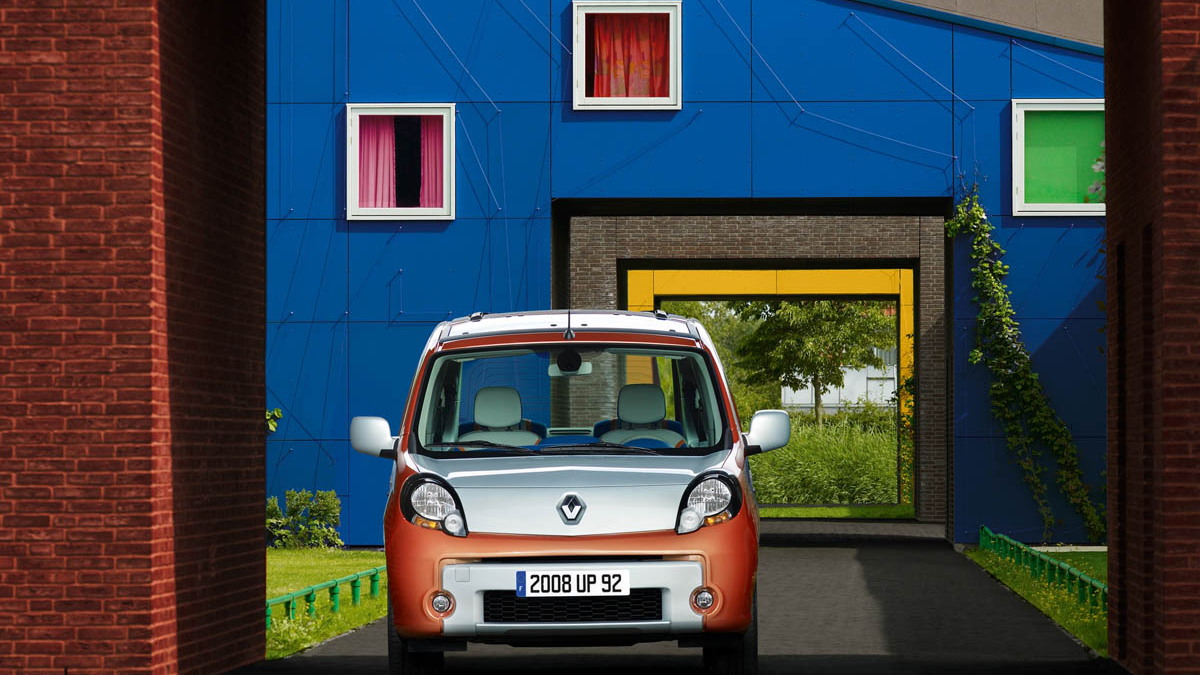Tossing around such buzz-words as 'urban-dwellers', 'fun and friendship' and 'strong personality', Renault also sees the Be Bop as a draw for younger, possibly more affluent buyers.
Three engines will be available at launch, depending on the buyer's country, including two diesel powerplants – the 1.5L, 85hp (63kW) dCi and the 105hp (78kW) dCi with six-speed gearbox – plus the petrol 105hp (78kW) 1.6L 16V unit.
The dCi 85hp, which delivers peak power at 3,750rpm, also features 147lb-ft (200Nm) of torque available from 1,900rpm, making it a realistic mode of transport both in urban environments and on the European open road. The small diesel also helps the Be Bop achieve a combined cycle fuel consumption of 44.3mpg US (5.3L/100km). This is equivalent to CO2 emissions of just 140g/km, making the car eligible for the Renault eco2 signature.
With the more powerful version of the 1.5 dCi, which can also be found in the Clio, Modus, Mégane, Scénic and New Laguna, the Be Bop benefits from maximum power of 105hp (78kW) at 4,000rpm, as well as 177lb-ft (240Nm) of torque at 2,000rpm. Thanks to its second-generation common rail injection, variable geometry turbo and 1,600-bar injector pressure, this powerplant yields relatively strong performance and a combined cycle fuel consumption of 43.5mpg US (5.4L/100km and 142g of CO2/km) thanks to its piezo-electric injectors and six-speed manual gearbox. Cabin noise, vibration and harshness is reduced by use of a twin-mass flywheel damper which reduces boom at low engine revs.
The 1.6 16V petrol engine develops 105hp (78kW) at 5,750rpm and maximum torque of 109lb-ft (148Nm) at 3,750rpm. It delivers outstanding driveability and low combined cycle fuel consumption of 29.8 mpg US (7.89L/100km) thanks to the use of lightweight materials and a timing system with roller cam followers.

The standard Renault Kangoo is larger, and more utilitarian in design
Inside, much of the equipment is standard Kangoo, though the rear seats are individual and raised slightly above the floor to give the car a feel unlike its siblings. Its extensive glazed area, in both roof and windows, floods the cabin with light. Oddly, due to the unique seating configuration, passengers can enter the rear seats in either of two ways.
The first is through the front doors, using a handle that folds down the back of the front seats and slides them out of the way. Ingress is made easier on the passenger side, where the seat slides further forward than on the driver’s side. Passengers can also climb into the rear seats through the open tailgate and the gap between the rear seats - Renault thinks this will be the preferred mode of entry for children in particular.






